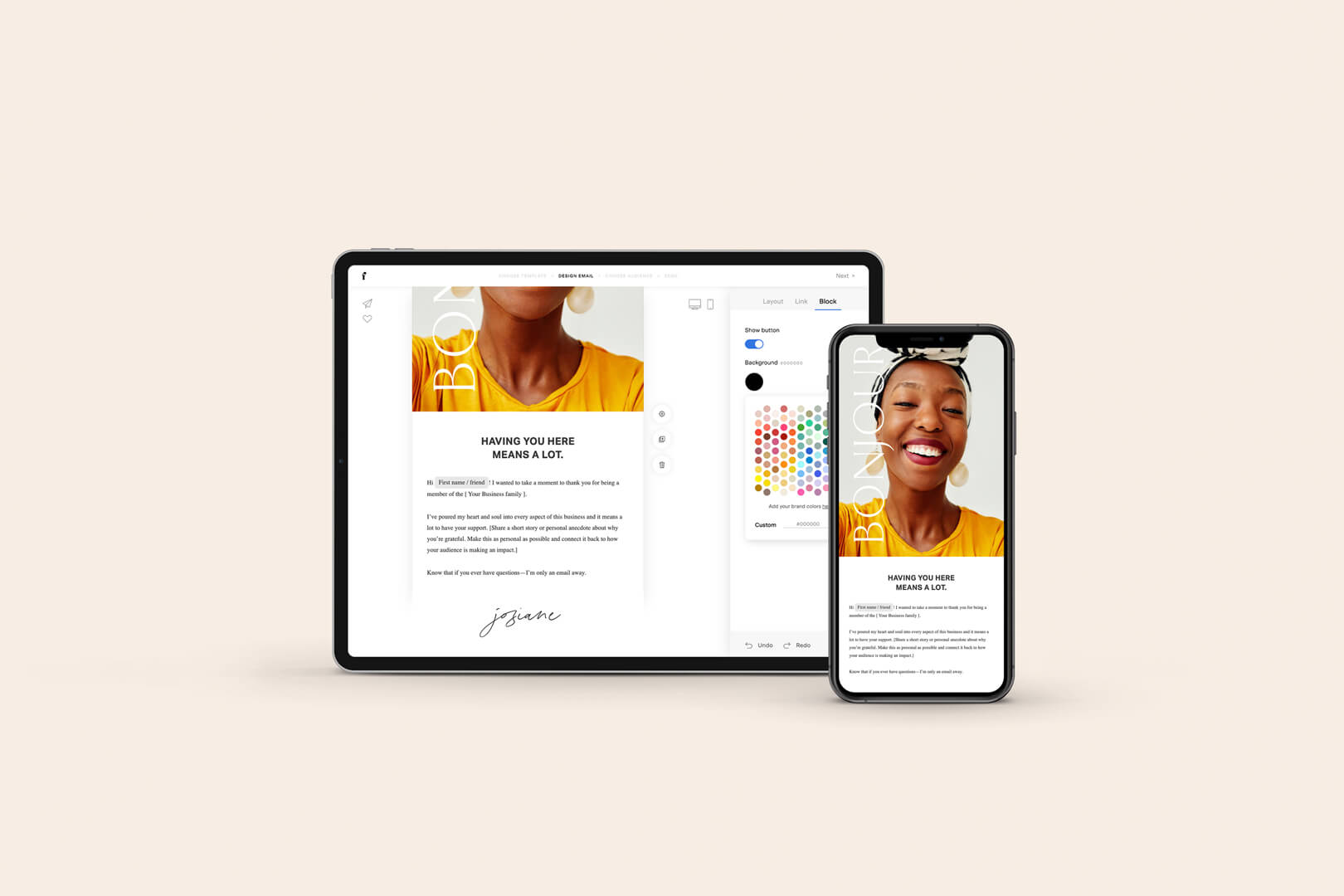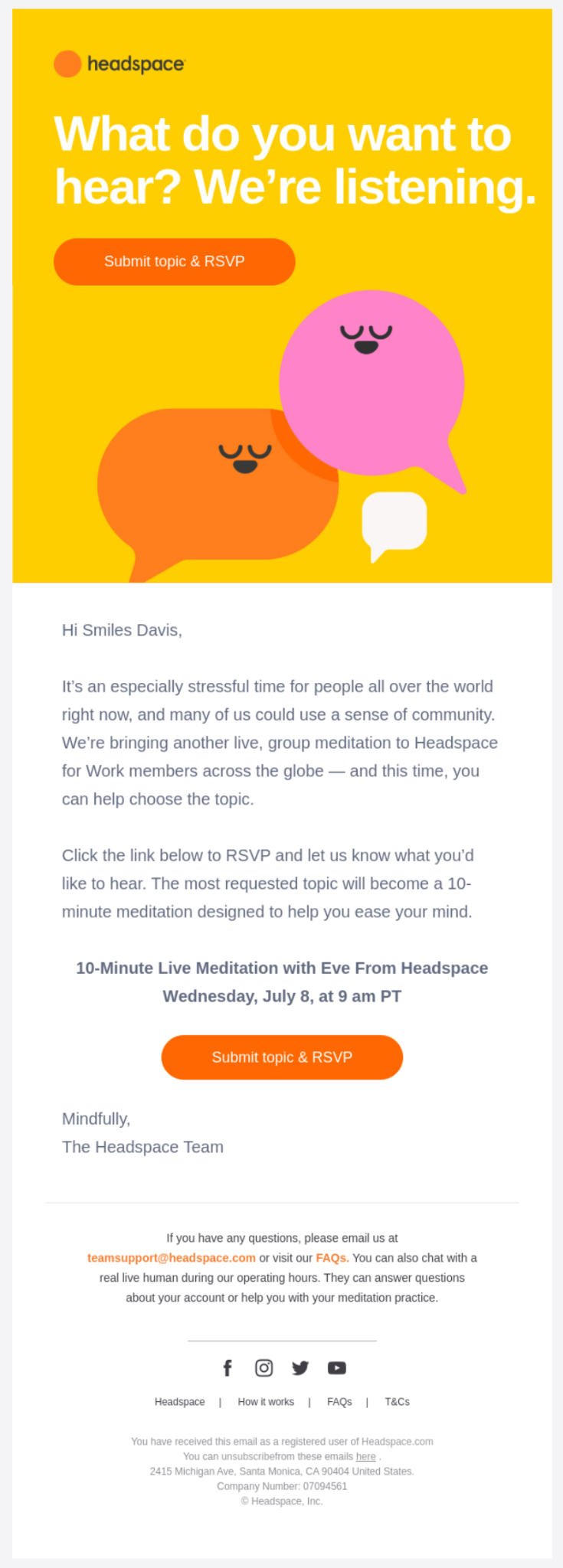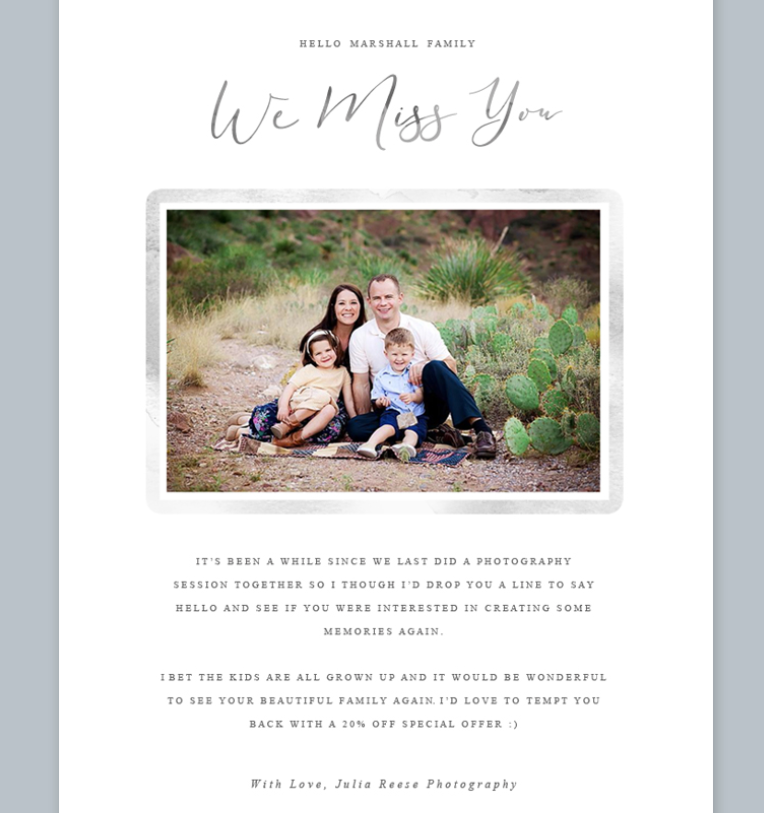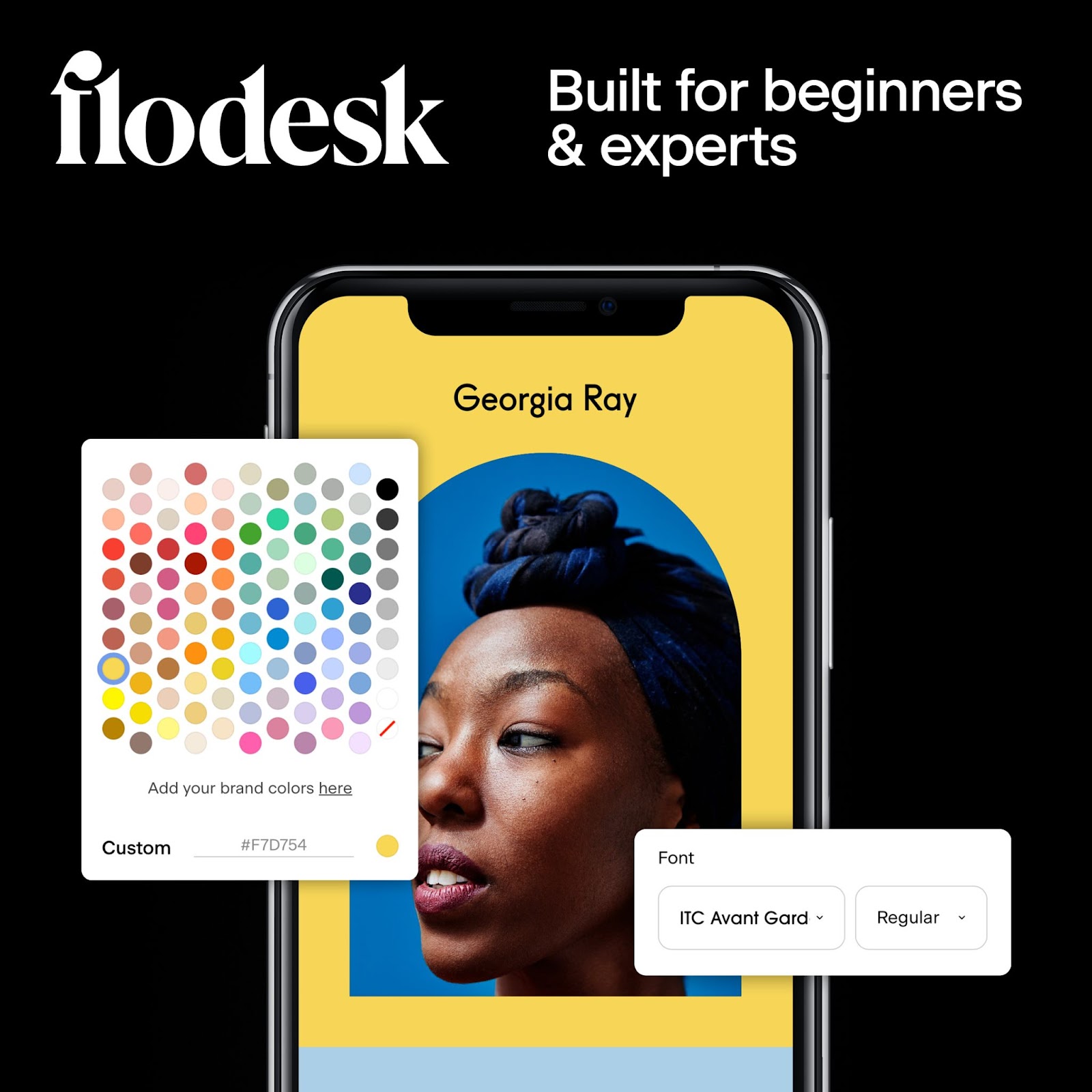We Miss You | Re-Engagement Email Examples to Win Back Customers
Table of Contents Jump to:
Jump to:
Table of contents
So, you’ve put in the effort and successfully established a healthy email list. (Cue: corks popping and balloons!) You’ve nailed down your welcome email and are all set for business glory. The hard work is done, and it’s smooth sailing from here on out.
Right? Wrong. The number of subscribers you have is only one part of the story. You don’t just want subscribers on your email list. What you need are people who are actively engaging with your emails and ultimately converting to customers.
This means you need to get clear on who’s engaging with your emails and who’s not. Once you’ve analyzed your data, it’s time to launch a campaign to prompt any inactive subscribers to get back on board. Delivering a series of beautifully designed, relevant re-engagement emails will be just the thing to tempt your subscribers out of hibernation.
This article will cover precisely what re-engagement emails are, why they’re important to your business, how to create the perfect “we miss you” email and five awesome re-engagement email examples to learn from.
Let’s get started!
What we miss you emails are and why they’re important
A re-engagement email is a marketing email sent to inactive subscribers or subscribers who don’t open or click your emails. Its aim is to get people who’ve stopped engaging in your emails interested again. This phenomenon of folks who have disengaged with your emails but not unsubscribed entirely is known as “opaque churn.” If your email analytics indicate a mass of subscribers who aren’t actively engaged in the emails you’re sending, it’s worth considering a re-engagement email campaign.
To learn more about what your data is telling you, read Understanding Your Flodesk Email & Workflow Analytics.
To create an effective re-engagement email campaign, it’s worth considering why subscribers churn in the first place. There are a few reasons subscribers turn inactive that you can’t really control, including:
- Life changes: Your subscribers’ kids grow up and your line of custom toys are no longer relevant to them.
- Communication preferences change: Your subscribers are still interested, but they’re hearing about your updates and promotions via a different channel.
- Mailing list culls: Your subscribers are generally trying to reduce their email volume, which often isn’t personal to your business.
But, sometimes there might be things you’re doing that need fixing in order to bring your subscribers back into the fold. Re-engagement email campaigns are your opportunity to tempt subscribers back with an enticing discount or promotion. They also act as a way to gather feedback from subscribers about anything that’s changed or that you could improve, such as email frequency, relevance or usability issues.
Re-engage subscribers with unlimited email sends in Flodesk
Send we miss you emails to your subscribers as often as necessary to win them back.
How to create the perfect “we miss you” email
Once you’ve identified inactive subscribers to re-engage, how do you get started? We’ve put together our top five tips to craft the perfect re-engagement email to let your subscribers know you miss them.
1. Make your subject line fun
Re-engagement emails need to stand out immediately and offer inactive customers value— while making them smile. And it starts with your subject line. To get the best from your re-engagement campaigns, personalize them as much as possible. This might mean sending slightly different email subject lines to unique audience segments based on what you know is important to them.
You could also personalize it with their first name and try something a little sillier than you normally would write. Also, use language that evokes a fear of missing out or that helps remind them they’re part of something exclusive. Since your main goal with win-back emails is to get more opens and clicks, make sure to have fun with it.
Get more tips and examples in our article dedicated to re-engagement email subject lines!
2. Remind them of the benefits
There’s a reason each of your subscribers joined your email list. At some point in time, they had a goal or pain point that whatever you were providing helped to address. A re-engagement email campaign gives you the perfect opportunity to remind them of the value they get from your emails.
You can reinforce the likely reason they initially subscribed with you based on what you know about them and the actions they take on your emails. Don’t be afraid to share any possible new benefits that might interest them now—either products or services you’ve introduced since they became inactive or things that might now appeal to them based on potential life changes or feedback you’ve received.
3. Ask them a question they’ll want to reply to
A great strategy for re-engagement emails is to ask a question. It’s human nature to want to answer questions that are asked of us, especially when they’re relevant and thought-provoking.
So this is a smart way to tempt your subscribers back into activity. You can also use emotive language like, ‘We really need your help’ in your email subject lines to encourage them to open it. To learn more about how to boost your open rate, read How to Get People to Open Your Emails.
Generally, there are two main options for questions you can ask:
- Ask your subscribers exactly why they’re inactive. This way, you can learn why they’ve gone cold on your emails and you can then make the changes needed to get them re-engaged in your emails and, ultimately, your product or service.
- Ask them what content they’d find valuable so you can make sure that future email newsletters provide the information that they’re looking for.
If you use either of these approaches, make sure to make it easy for your subscribers to reply. Ask them to hit reply to let you know or include buttons they can click to quickly respond to your question and become re-engaged with your content.
4. Offer them an exclusive discount
Offering an exclusive discount might be enough to re-engage an inactive subscriber and get them to put in an order, especially if they’ve since been tempted away by discounts from your competition.
For example, take a look at this promotion from the e-commerce business, Hair For The Girls, that’s trying to entice subscribers to re-engage with a limited-time weekend discount:
Attract subscribers’ attention and incentivize them to open your re-engagement emails by placing the promo in the subject line of your email so it doesn’t get lost as they scroll through their inbox. In the body of the email, show you value them by thanking them for continuing to choose you and then reiterate the offer.
5. Ask them to indicate if they want to keep seeing your emails
Most of us are busy and we receive lots of emails every day from various brands. There’s every possibility your emails are just getting lost in the sea of other communications that your subscribers face on a daily basis.
Take some of the pressure off by asking if they’d prefer to change the frequency of your emails or opt-out of particular campaigns. This way, they can review their email preferences and make any changes that suit them.
To learn how to let subscribers opt-in and opt-out of content without unsubscribing from your entire list, check out How to set up the Preferences Page.
This is important because while you want to retain subscribers, if what you’re sending doesn’t prompt them to take action, sometimes it’s best to cut them loose and focus your marketing efforts on subscribers who see the value in your offering.
By reminding subscribers that they can manage their preferences, you can keep your email list as clean as possible. Inactive subscribers can affect your email marketing performance and decision-making by skewing your open rate and email deliverability, and you don’t want that happening.
However, carefully consider if you want to take the step of unsubscribing for them even if they don’t respond to any of your re-engagement emails. Inactive subscribers may still be valuable to your business. For example, if your products are predominantly seasonal, you may well have a subscriber list that buys just once a year yet still significantly contributes to your revenue. A targeted annual promotional offer may be all that’s needed to retain these customers for life.
So, it’s not a one-size-fits-all for everyone. You’ll need to weigh up what’s most important to your business and, if you leave inactive subscribers on your list, understand that they’ll impact your metrics.
As a little aside, this is why it’s worth investing some time in carefully choosing your email marketing provider. Flodesk will never penalize you for growing your email list or hanging on to your subscribers. You always pay one fixed price, no matter how big your email list or company becomes.
Give your subscribers the power to choose
Create beautiful Flodesk forms that give subscribers the power to choose what emails they want to receive.
It’s also worth noting that you might not be able to cover all these bases with just a single email. You might want to set up an entire re-engagement email series of 3-4 emails covering the following key elements.
Key elements your we miss you email campaign should have
- Reminder: An initial email that reminds them they haven’t engaged and that you’ve missed them. This email should be fun and light-hearted. You want to entertain them and help them remember why they subscribed in the first place. Highlight the benefits of your newsletter and what they’ve missed out on while being inactive.
- Feedback: This is your chance to get more information about why they’ve been inactive. You can ask a question and get them to review their email preferences or update their details.
- Promotional: Use this email to hit them with a tempting discount or promotion. Reinforce that they are valuable to you and you’re looking forward to having them back in the club.
- Unsubscribe: If they haven’t responded to your previous re-engagement emails, you can send an email offering them the opportunity to unsubscribe from further mailings.
Read next: 8 best email sign-offs to steal!
5 examples of successful we miss you email campaigns
Now you know how to create the perfect re-engagement email to tell your subscribers you miss them and get them back on board with your business. So what do these emails look like in real life? Let’s take a look at five amazing examples of successful re-engagement campaigns.
1. Gabby Pinkerton
Gabby Pinkerton hosts a YouTube channel and owns a wedding planning company. She also runs courses for wedding pros, helping them to maximize their blogs and Pinterest channels. In this re-engagement email, she immediately targets subscribers’ fear of missing out by highlighting in bold, capital letters, “DID YOU MISS IT?”
She then clearly states the benefits subscribers will gain by attending the missed wedding summit, adding credibility by name-dropping the experts that’ll be offering advice. She also shares that other wedding pros have given the summit their stamp of approval and reinforces the sense of FOMO by suggesting how attendees are already talking about it. The message is clear—if you don’t attend, you’re going to fall behind your competition.
It’s an especially smart tactic for re-engaging subscribers, as Gabby’s target audience is likely to be millennials, 69% of whom experience FOMO. Signing off with a time-limited promotion of the summit and using language like “All-Access pass” builds a sense of urgency and hammers home to subscribers that they should act now to stay in the club.
2. Headspace
This is a great example of a re-engagement email from the Headspace team. By using a question and assuring subscribers they’re listening, they’re indicating that they care about the needs of their membership. The question tempts people to respond, which acts as an RSVP to the live meditation session. This allows Headspace the opportunity for further follow-up emails, like reminding the subscriber of the webinar’s date and time and also asking for feedback after the session.
The email also implies the subscriber has the power to influence the topic of the meditation, which gets them invested in the outcome. It’s further personalized by using the subscriber’s name and Headspace makes sure to call out a likely pain point—the especially stressful time—and show how they can help. The CTA button stands out against the white space used for the body of the email and the entire email color palette is on-brand.
3. Brit + Co
Lifestyle brand Brit + Co created this fun “we miss you” email to encourage lost subscribers to re-engage. It’s targeted to their demographic of millennials through the use of the “Boy Meets World” reference that’s likely to bring a smile to the faces of those receiving it. These positive feelings of nostalgia are reinforced by the mention of the ‘90s and the image of the corded telephone.
Marketing that speaks to our emotions in this way—by reminding us of good times in our past—is particularly effective because emotions affect our judgment and decision-making. So this strategy, coupled with the $10 off promotion, might be just what’s needed to encourage subscribers to re-engage.
4. Julia Reese Photography
This ‘we miss you’ email also uses an emotional connection to encourage re-engagement. Personalizing it to the ‘Marshall Family’ and reminding the recipient of the memories their last photoshoot created—through wording and including a copy of their family photo—is another example of nostalgia marketing.
Of course, this company may face inactive subscribers because family photography is a service that’s required less frequently than others but, if the timing is right, the 20% off special offer might encourage subscribers to book another shoot.
5. RawSpiceBar
Let’s look at the body content of this re-engagement email from the global spice subscription service RawSpiceBar. Similar to Headspace, they use a question to try to gain feedback from customers who’ve unsubscribed. This tactic shows customers that RawSpiceBar cares about trying to meet their needs and is also an opportunity for RawSpiceBar to gather information from customers that they can use to improve their service for the future.
This re-engagement email also showcases a new product—the seasonally inspired quarterly subscription—which, if subscription length or product range was a factor in losing subscribers, may inspire them to rejoin the service. The content is also personalized using the subscriber’s name and includes a discount code.
Get unlimited email sends and subscribers with Flodesk
We’ll never increase pricing because your email list is growing
Use re-engagement emails to get subscribers back on board
After all the effort you put into growing your subscriber list, it can be frustrating if you crunch the numbers and discover that many of them have gone AWOL. Try not to get disheartened. It’s perfectly normal for some subscribers to become inactive as their lives and priorities change. For others, a well-thought-out targeted prompt that reminds them of all the benefits your emails—and ultimately your products or services—provide is all that’s needed to get them re-engaged.
As the fastest-growing email marketing company, Flodesk makes email marketing beautiful—and truly easy to use. Combining design with simplicity, Flodesk helps small business owners like you grow their email lists and create emails people love to get. Flodesk’s curated email template gallery also makes it easy to quickly customize your re-engagement emails and show your subscribers you’ve missed them.
Flodesk stands out from the crowd by encouraging its members’ success—offering unlimited email sends, unlimited subscribers and unlimited access to all email marketing features for a flat fee of $38/month. So stop worrying about juggling inactive subscribers while attracting new ones.
Try Flodesk free for 30 days.









